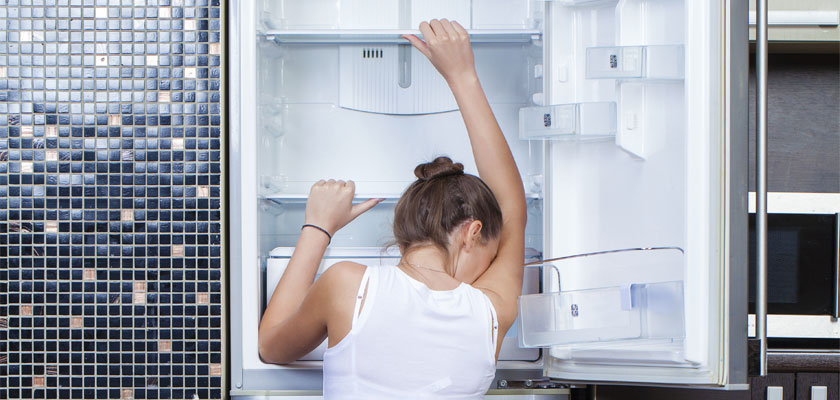Is your refrigerator not cooling? Chances are you have a broken refrigerator on your hands, but we can help!
What would you do without your refrigerator? Eat out every meal? Shop every day?
It’s hard for us to imagine living without these modern conveniences, yet we rarely think much about them until something goes wrong.
Knowing when something is wrong and what to do can extend the life of your refrigerator. But failing to spot the warning signs could lead to complete failure or costly repairs.
Here’s how to spot a broken refrigerator and what to do about it.
1. Everything’s Frozen
If everything’s frozen in the refrigerating section, check the thermostat. It should be between 32 and 40 degrees. The freezer should be under 32.
If the thermostat appears to be set correctly, then a sensor is probably damaged. A professional repair person will need to determine the cause and fix it.
Delaying repair in this instance can do a lot of damage because the refrigerator is working overtime trying to cool the space that is already cold. Don’t wait on this one.
2. Not Cooling
If you find that the refrigerator isn’t cooling, then there may be an issue with the condenser. This could be a relatively easy DIY fix or it may require a professional.
Under the refrigerator are a set of cooling coils and a fan. Dust and pet hair can build up to the point that they cannot function effectively.
If you feel comfortable doing so:
- Unplug the refrigerator
- Remove the lower front kick plate
- Gently vacuum the coil, fan, and compressor
- Replace the kick plate
- Pull the refrigerator out from the wall
- Gently vacuum the back
- Plug it in and turn it back on
If it still isn’t cooling, you have a broken refrigerator. It could be a small fix or large one. Either way, you need a professional opinion.
3. Frost Buildup
When frost builds up in your refrigerator/freezer, the unit will struggle to maintain a consistent cooling or freezing temperature. This can lead to premature spoilage or food borne illness on top of having less room to store your food.
As the moisture in the air cools, it adheres to the sides that hold the cooling coils beneath. This cooling air layers on top of the frost that adheres to the sides in a continual chain of events.
This is all natural, but modern refrigerators should be able to keep frost from building up. They have sensors to detect frost buildup. And an automatic defrost cycle should run approximately every 6 hours.
If frost is building up in the refrigerator, then likely either your sensor or defrost system isn’t working. You can manually defrost it every 8 hours. But who wants to do that?! Contact a professional.
4. Leaking
If water is leaking under the refrigerator, then you very likely have a clogged or freezing defrost drain. Or you could have a cracked pipe or hose.
Follow steps 1-7 in the above link. Be careful not to suck up water unless you have wet-dry vac. If it’s still leaking, call a technician.
5. Not Running
If food is slowly thawing in the freezer and the other section is reaching room temperature, your refrigerator may not be working.
To troubleshoot, listen for a fan and look for power lights. Does the refrigerator appear to be on?
Check the circuit breaker to make sure it hasn’t tripped.
If that’s not it, contact a repair person immediately. Transfer food to a friend’s refrigerator if food is still cold. If it appears to have been off for a while, the food may not be salvageable. Safety first.
Broken Refrigerator? Not a Problem
By spotting these warning signs early, hopefully, you can avoid getting to #5 on our list. And you can significantly extend the life of your unit.
If you need a technician to check it out, don’t delay, call 800-890-1777
Or, click here to schedule online and get $15 off!

